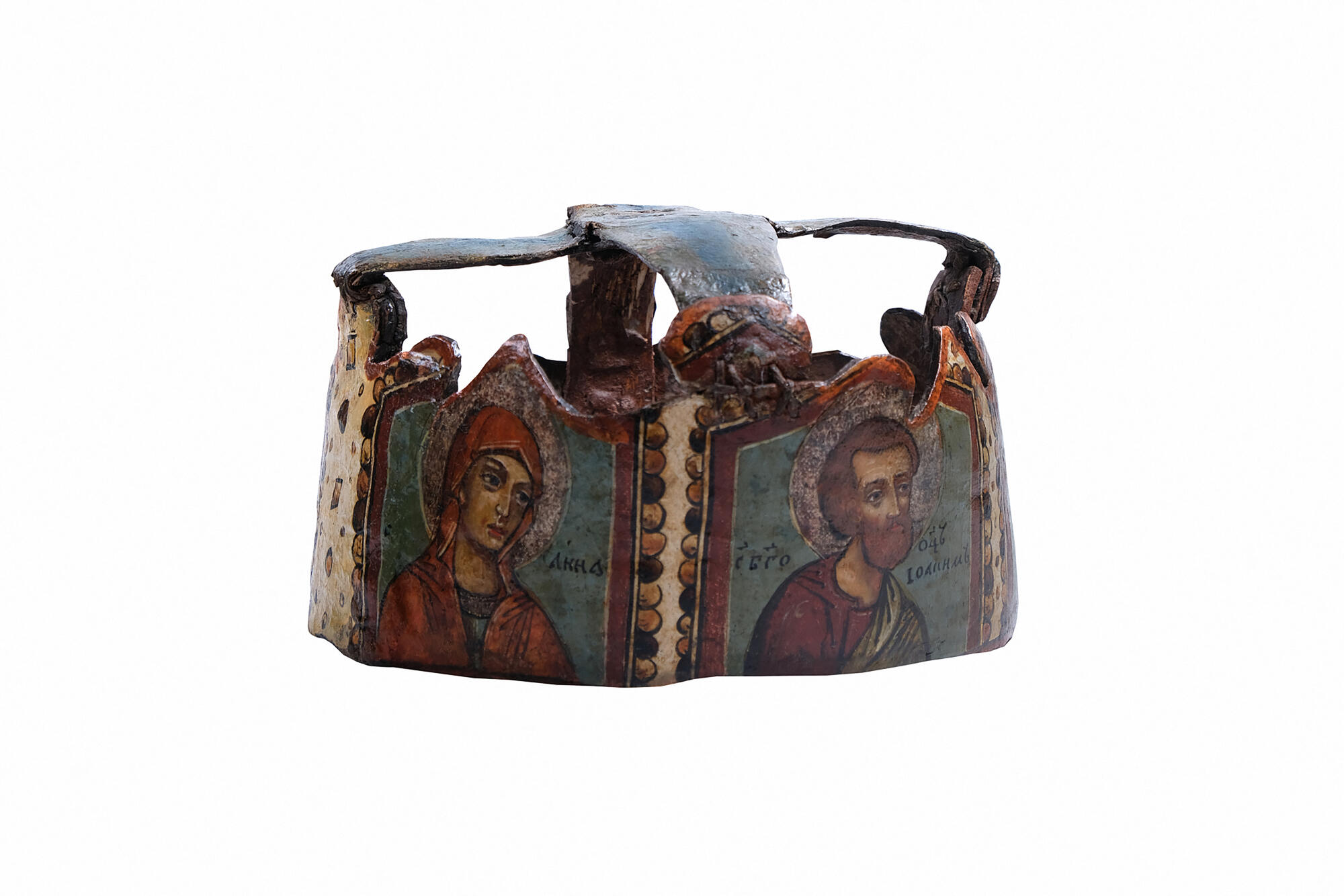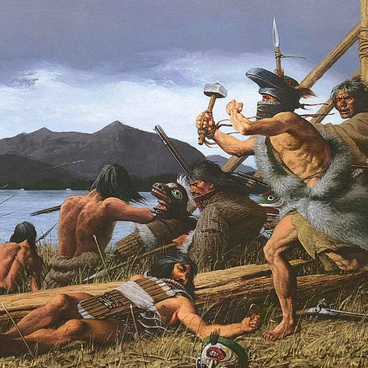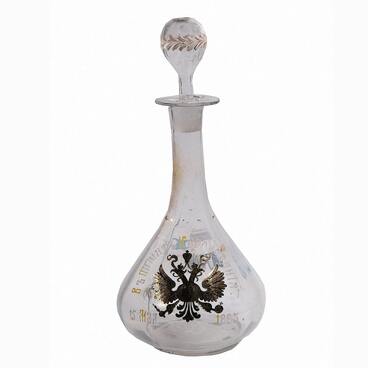A wedding is a church sacrament by which marriage is sanctified. During the ceremony, special crowns are placed on the heads of the future spouses. Sometimes the bride and groom’s relatives hold them over the couple’s heads.
The crown was a mandatory attribute of marriage even among ancient peoples. A bridal wreath is mentioned in the Old Testament. In addition, there is evidence that since the 5th century, the crowns themselves, twined from flowers and branches, were part of the church blessing of marriage. In Ancient Rus, believers used hoops resembling wreaths, while foreigners mentioned wooden and bast products. Birchbark crowns were often found in the Russian North of the 17th — 18th centuries.
The museum’s collection includes a hoop with alternating sharp and round serrations. The two straps in its upper part look like a four-pointed cross.
The crown was a mandatory attribute of marriage even among ancient peoples. A bridal wreath is mentioned in the Old Testament. In addition, there is evidence that since the 5th century, the crowns themselves, twined from flowers and branches, were part of the church blessing of marriage. In Ancient Rus, believers used hoops resembling wreaths, while foreigners mentioned wooden and bast products. Birchbark crowns were often found in the Russian North of the 17th — 18th centuries.
The museum’s collection includes a hoop with alternating sharp and round serrations. The two straps in its upper part look like a four-pointed cross.
In the center of the hoop, the artist painted the Mother of God indicating that the crown is for women. The image of the Savior was usually depicted on the one for men.
Images of the Mother of God with the Child are divided into certain types. The crown features Our Lady of the Sign: this type is distinguished by the fact that the Virgin is depicted with her hands raised in the orans position, and the Child Jesus is enclosed within a round aureola upon her chest. The painter chose to focus on the second symbol. The infant Christ in the bosom of the Mother of God reminds of the greatest miracle of the Incarnation of God.
The Mother of God is flanked by married couples symbolizing a respectable marriage. On the right, there are Adam and Eve — the first married couple created by God. The left side shows Joachim and Anna — the parents of the Holy Virgin. Their relationship has become a symbol of pure union. The elderly childless couple was rewarded by God with the birth of a child for their righteous life.
The Mother of God is flanked by married couples symbolizing a respectable marriage. On the right, there are Adam and Eve — the first married couple created by God. The left side shows Joachim and Anna — the parents of the Holy Virgin. Their relationship has become a symbol of pure union. The elderly childless couple was rewarded by God with the birth of a child for their righteous life.
All images are made in the icon painting technique and are accompanied by inscriptions.
The crown used to be in the collection of Kapiton Kolpakov, the founder of the Kargopol Museum. According to the entry in the museum’s register of the 1920s, this item was brought by his relative who had visited the Vygovsky Danilov Monastery in the Povenetsky Uyezd — it is considered a major Old Believer center. Local artisans were famous for their skillful copper casting and paintings, their works being in demand among the Old Believers and others.
The crown used to be in the collection of Kapiton Kolpakov, the founder of the Kargopol Museum. According to the entry in the museum’s register of the 1920s, this item was brought by his relative who had visited the Vygovsky Danilov Monastery in the Povenetsky Uyezd — it is considered a major Old Believer center. Local artisans were famous for their skillful copper casting and paintings, their works being in demand among the Old Believers and others.



